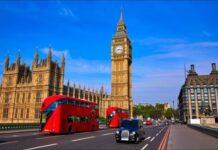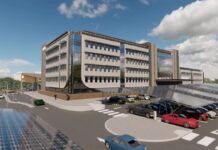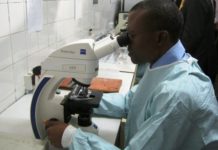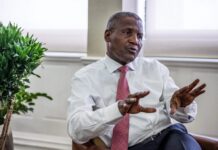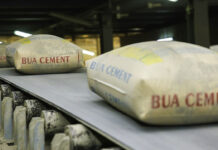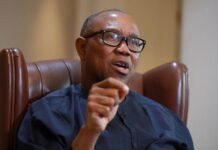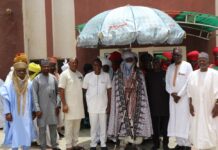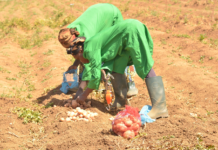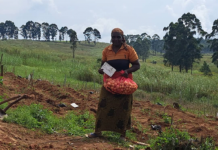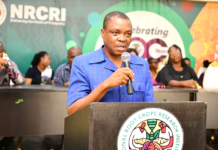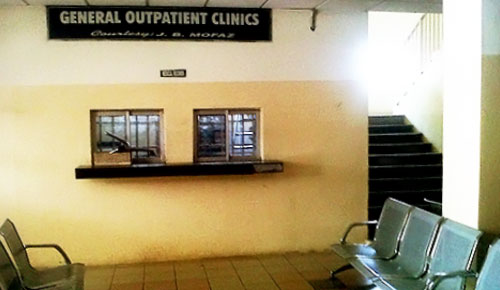The woman doesn’t exactly rush once she clears security at the gates of Wuse General Hospital; she and her daughter simply pass a notice at the gate informing the public that hospital workers have been on strike since December 2, 2014.
The main entrance is the General Out Patient Department, which abuts on the laboratory and pharmacy.
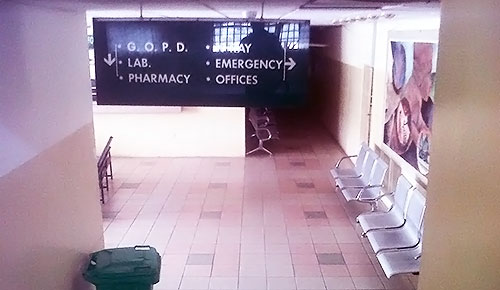
Lined against walls, stainless steel seats stand empty. The backsides of patients are gone from them.
Along corridors, doors remain shut. The wards are dark behind double doors, and the beds are empty. Among them are beds that once held dozens of people wounded in terror attacks before the end of 2014.
Next door is a theatre where Baby Goodness’ mother was treated, after the 10-month-old was estranged from her mother in the April bomb blast at a bus station in Nyanya.
Goodness was hospitalised at Asokoro district hospital days before she joined her mother at Wuse, both making their way through intensive care.
Wuse General Hospital, run by the FCT administration, is known for its record patient turnover. These days the only reminders that patients routinely thronged this hospital before December 2 are the dusted-over folders of patient records stacked on shelves in its second outpatient unit.
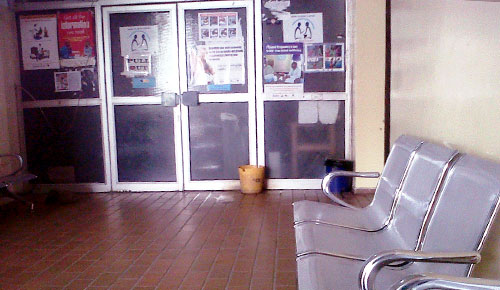
Even that is only accessed through internal corridors; the entrance to that part is locked. Beyond it are seats where women sat, sang, prayed, and took lessons from nurses during antenatal clinic.
A left turn opens into a corridor lined with consulting rooms. It is toward noon and the doors to the consulting rooms are shut. Any patient for the day has been seen, if any, doctors explain. The holidays mean fewer patients are coming in; they also mean no appointments are being booked this period.
A right leads up a staircase to upper-floor maternity and children’s wards. All empty, locked. Further on are wooden cubicles that read “In Patient Pharmacy” and “Cash Point”. Patients out of consulting rooms would have come here armed with their prescriptions: they pick up their drugs in the first cubicle and pay for their drugs in the second. Now all are empty and locked.
From below stairs, outside the main building, come voices: women and men voicing complaints, doctors attending to them. It is an eye clinic, manned fully by doctors.
No nurses in sight. “Everyone is on strike, they are not working,” says a man in oxblood scrubs and theatre-issue footwear. “I work here,” he says.
So why is he at work then? He speaks with the authority of a staff on a mission, but he’s not a doctor, not a nurse, not a pharmacist or lab technician, just a porter. “I work under administration,” he says, explaining why he’s at work.
A week before December 2, hundreds of nurses and midwives take to the streets of Abuja to protest continuous deplorable working conditions in public hospitals. In private comments, they talk with deep-seated anger but stayed away from going on record.
“By standard, every ward is supposed to have a weighing scale which is used in the calculation of accurate dosage of drugs for patients,” says one nurse at Karshi district hospital. “But in our hospital here, we have just one which covers four wards. Also, each ward is supposed to have a sphygmometer, but we have only one that services three wards; we borrow and recycle it among ourselves.
Says another at Nyanya General Hospital, where he oversees as much as 30 beds: “In a situation where you have critical cases at the same time, there is no way you can cope, because you are human and there is an extent your strength can carry you. As we go through this stress and poor working conditions, we are denied further training. If you apply for it, they simply reply that there are no enough staff.”
Medical directors of the hospitals visited for this report could not be reached for comment.
But the unions behind the strike have been pushing for government to implement agreements and National Industrial Court rulings in their favour.
Top on their claims are lopsided appointment and advertorials for chief medical directors and a demand that the post of DCMAC (deputy chairman of medical advisory committee) created by tertiary hospital administrations be abolished for not being legal.
A major point is arrears arising from modified pay structure that came from a collective-bargain agreement to allow health workers skip CONHESS 10, which has been implemented for doctors, but denied other health workers, and specialist allowances going back to January 2010.
The union also demands circular publicising a separate department for medical lab scientists and other professionals it said were “currently being marginalised” by doctors, adjustment in retirement age from 60 to 65 for non-professorial cadres and 65 to 70 for professorial cadres.
The strike that’s left hospitals empty is no longer news, not even for the woman and her daughter entering the emergency unit. They are not an emergency case, not eligible for the “skeletal and emergency services” on offer in hospitals affected by the strike throughout the country.
The six staff stationed there quickly decide to stand at ease. One scrolls down the touch screen of a Windows phone, another plays with a baby on her chest. At the door, a pair engages in hot chat about Christmas bonus unevenly divvied up between nurses and doctors.
“Everyone you see here is a doctor,” one explains.
In the once busiest hospitals of Abuja, doctors are bending over backward to take on the roles of nurses, pharmacists, lab technicians and every other hospital staff in-between.
Maitama district hospital has the same lethargic air. Two helps gossip at the reception desk, watching over a father and two children waiting to enter the outpatient unit. They will get attention; at least the open cash point signifies that. But every other unit—from antenatal, maternity and family planning to male, female and children’s ward—is shut.
In the corridor, seated on the stainless steel seats now rid of patients, one doctor in white coat is engrossed with her phone, another strolls through the exit doors, and a trio of them chat excitedly. The doctors’ lounge stands empty and silent on the second floor of the hospital. The emergency unit is also empty.
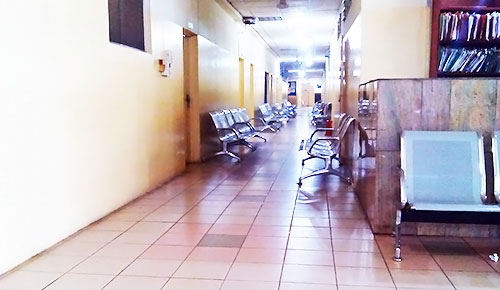
National Hospital has more energy. Emergencies just aren’t coming in and skeletal services are all that remain.
“Services are being rendered, patients are being attended to, from lab to clinic to ward,” says Dr Nasiru Abdullahi. “We know it can’t be 100% but if you are able to achieve 70% this period it is okay.”
The resident doctor now divides time between pathology practice and clinic hours to see the few patients available. Other consultants are doing same to ensure the basic chain of a hospital visit—booking, consultation, diagnosis, test, prescription, pharmacy visit, billing—remain unbroken.
All those points would have been manned by different people, bussing patients from point to point. But having a single doctor do everything from taking vital signs and specimens for test to prescribing has reduced time spent on each patient.
“A lot of bureaucratic bottlenecks have been reduced. Time used in attending to patients is far more reduced,” says Dr Abdullahi.
It doesn’t necessarily mean more time for more patients, though. Patient numbers are few this holiday, and doctors are pushing any appointments far into the first week of January, when they hope more patients will be present.
What seems to have suffered mostly is patient record. They are computerized at National, so doctors on duty simply call up patient number on the hospital database to produce a temporary file, which will be reconciled with the main file once the strike is over.
Suspension of “concessionary and skeletal services” by Joint Health Sector Unions hasn’t had any more bite since the strike started, doctors explain, because work in lab and dispensing that constitute skeletal services are taken up by top-management officials, ordinarily exempt from joining strikes.
Or they are taken up by interns and graduates on youth service, and they help ring out another day in hospitals on strike.
Story and photos contributed by Judd-Leonard, a maternal and newborn health champion.
First published 19th Jan 2015 on Dailytrust.com.ng and mamaye.org.ng
